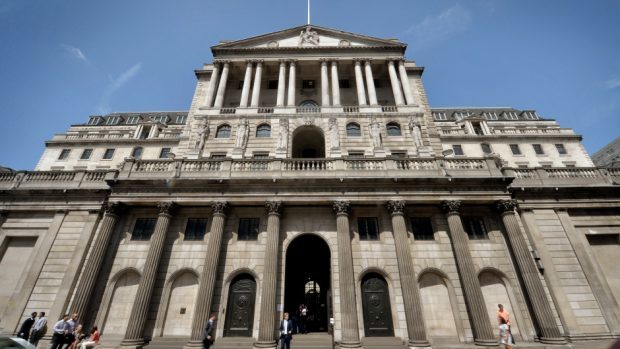The Bank of England may hold off cutting interest rates again next month amid indications the UK economy is performing better than expected in the wake of the Brexit vote.
With the first set of official growth figures since the referendum due next week, economists believe gross domestic product (GDP) data for July to September will show the economy holding up well.
Resilient consumer spending and a robust performance from the services sector is set to see growth of between 0.4% and 0.5%. This is down from 0.7% in the second quarter, but far better than feared in the immediate aftermath of the referendum.
In August, the Bank slashed interest rates and launched an economy-boosting package worth up to £170 billion, warning that even after its action, third quarter growth would almost flat-line at around 0.1%. It said more rate cuts were likely in the coming months.
A surprisingly hardy performance from the economy since then saw the Bank upgrade its growth forecast in September to between 0.2% and 0.3%, but it still said another rate cut was on the cards by the end of the year.
Economists now believe Thursday’s growth figures may prompt the Bank to hold off from lowering rates again in November, with decent retail figures and rising employment suggesting little Brexit caution.
Samuel Tombs, at Pantheon Macroeconomics, said: “The latest retail sales figures suggest that next week’s preliminary estimate of GDP will significantly exceed the Monetary Policy Committee’s 0% expectation when it made its guidance that it would cut interest rates again this year.
“We look for a 0.5% quarter-on-quarter rise in GDP, which likely will persuade the MPC to refrain from cutting interest rates in November.”
Alan Clarke, at Scotiabank, forecasts a 0.4% rise in third quarter GDP, adding: “If we get a number like that, the Bank of England isn’t going to be in a rush to loosen monetary policy again in November.”
But economic clouds are gathering on the horizon, with inflation building and signs of weakness in the labour market.
Inflation hit its highest level for nearly two years in September, at 1%, and is expected to rise further as the plunging pound sends costs soaring.
Figures published yesterday by economist Tony Mackay estimated Scotland’s GPD for August at just under £9.6 billion, a real terms increase of 1.2% on the same time last year.
Describing October as a “mixed month” for the Scottish economy, Mr Mackay said: “There seems to be increasing acceptance that the Brexit doom and gloom forecasts were overdone, at least for the current year. Nevertheless, the forecasts show a significant slowdown in UK economic growth in 2017.
“The situation in Scotland is complicated by the ongoing recession in the North Sea oil and gas industry. At the beginning of the year we forecast Scottish GDP growth of +1.6% in 2016 but that now seems very optimistic. It was made before the Brexit vote.
“We also forecast a small improvement in growth in 2017 and 2018 on the expectation that the recession in the North Sea oil industry might have ‘bottomed out’. However, that improvement might not happen if the forecasts of a significant slowdown in UK GDP growth prove accurate.”
